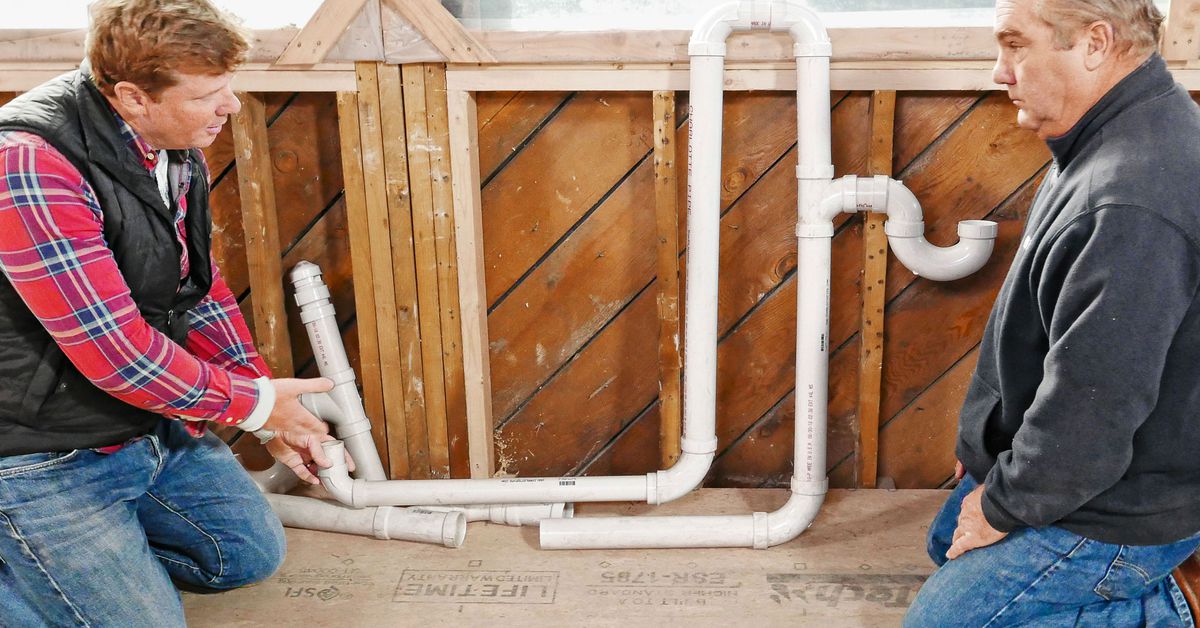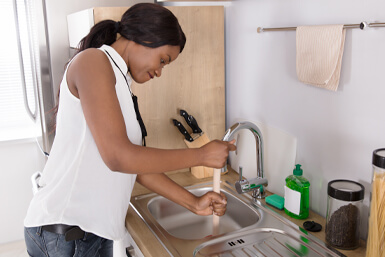They are making a number of great observations about Why Do My Pipes Make Noises as a whole in this article below.

To diagnose loud plumbing, it is essential to identify very first whether the unwanted noises happen on the system's inlet side-in other words, when water is turned on-or on the drain side. Noises on the inlet side have actually differed reasons: excessive water stress, worn valve and also tap components, incorrectly linked pumps or other home appliances, inaccurately positioned pipe fasteners, and plumbing runs having way too many limited bends or various other constraints. Noises on the drain side usually originate from poor area or, just like some inlet side sound, a design consisting of tight bends.
Hissing
Hissing sound that occurs when a faucet is opened a little typically signals excessive water stress. Consult your neighborhood water company if you believe this problem; it will certainly have the ability to tell you the water stress in your location as well as can mount a pressurereducing valve on the inbound water system pipe if needed.
Other Inlet Side Noises
Squeaking, squealing, scratching, breaking, and tapping typically are brought on by the expansion or contraction of pipelines, normally copper ones providing hot water. The audios take place as the pipes slide versus loosened bolts or strike close-by home framework. You can typically determine the place of the problem if the pipes are revealed; just follow the noise when the pipelines are making noise. Probably you will certainly uncover a loose pipe wall mount or a location where pipes lie so near to flooring joists or various other mounting items that they clatter against them. Connecting foam pipe insulation around the pipes at the point of get in touch with need to remedy the issue. Make certain straps as well as wall mounts are secure and offer sufficient assistance. Where possible, pipeline bolts need to be attached to enormous architectural aspects such as structure wall surfaces instead of to framing; doing so lessens the transmission of resonances from plumbing to surfaces that can enhance as well as move them. If affixing bolts to framework is unavoidable, cover pipes with insulation or various other resilient material where they speak to bolts, and also sandwich completions of brand-new bolts in between rubber washing machines when mounting them.
Remedying plumbing runs that deal with flow-restricting tight or various bends is a last option that must be undertaken only after seeking advice from a knowledgeable plumbing professional. Sadly, this situation is relatively typical in older residences that might not have actually been developed with interior plumbing or that have seen several remodels, especially by novices.
Chattering or Shrieking
Extreme chattering or shrilling that takes place when a valve or faucet is turned on, and that typically vanishes when the installation is opened totally, signals loosened or malfunctioning inner parts. The solution is to change the shutoff or faucet with a new one.
Pumps and appliances such as cleaning equipments and also dishwashing machines can transfer electric motor sound to pipes if they are improperly connected. Link such products to plumbing with plastic or rubber hoses-never inflexible pipe-to isolate them.
Drainpipe Noise
On the drain side of plumbing, the chief objectives are to remove surface areas that can be struck by dropping or hurrying water as well as to insulate pipes to contain inescapable noises.
In new construction, bath tubs, shower stalls, commodes, as well as wallmounted sinks and containers ought to be set on or against resilient underlayments to lower the transmission of audio with them. Water-saving bathrooms and also taps are much less noisy than conventional models; mount them rather than older types even if codes in your area still allow making use of older fixtures.
Drainpipes that do not run vertically to the basement or that branch right into straight pipe runs sustained at flooring joists or other framing existing especially troublesome sound issues. Such pipelines are large sufficient to radiate considerable resonance; they also lug substantial amounts of water, that makes the scenario worse. In brand-new building and construction, specify cast-iron dirt pipes (the huge pipelines that drain commodes) if you can manage them. Their enormity includes a lot of the noise made by water travelling through them. Also, prevent routing drainpipes in wall surfaces shared with rooms as well as spaces where people collect. Walls containing drainpipes must be soundproofed as was explained earlier, making use of double panels of sound-insulating fiberboard and also wallboard. Pipes themselves can be covered with unique fiberglass insulation made for the function; such pipelines have a resistant vinyl skin (sometimes having lead). Results are not always sufficient.
Thudding
Thudding sound, commonly accompanied by shuddering pipelines, when a faucet or device shutoff is shut off is a condition called water hammer. The sound and resonance are triggered by the resounding wave of stress in the water, which all of a sudden has no area to go. Often opening a shutoff that releases water rapidly right into a section of piping having a restriction, arm joint, or tee installation can generate the exact same condition.
Water hammer can typically be healed by setting up installations called air chambers or shock absorbers in the plumbing to which the trouble valves or taps are linked. These tools enable the shock wave created by the halted circulation of water to dissipate airborne they contain, which (unlike water) is compressible.
Older plumbing systems may have brief vertical sections of capped pipe behind wall surfaces on faucet runs for the very same function; these can at some point full of water, lowering or destroying their efficiency. The remedy is to drain pipes the water system totally by shutting off the primary water supply valve as well as opening up all faucets. After that open up the main supply shutoff as well as shut the taps one by one, beginning with the tap nearest the valve as well as ending with the one farthest away.
If Your Plumbing is Making These Sounds, There’s a Problem
A Bang or Thump When You Turn Off a Faucet
If a loud bang or thump greets you each time your turn off running water, you likely have a water hammer. A water hammer occurs when the water velocity is brought to a halt, sending a shock wave through the pipe. It can be pretty jarring — even worse, damaging to your plumbing system. All that thudding could loosen connections.
Strange Toilet Noises
You’re so familiar with the sounds your toilet makes that your ears will be attuned to anything out of the ordinary. Fortunately, most unusual toilet noises can be narrowed down to just one of several problems.
Foghorn sound:
Open the toilet tank Flush the toilet When you hear the foghorn noise, lift the float to the top of the tank If you’re ambitious, you can remove the ballcock valve and disassemble it to replace the washer. Or you can more easily replace the ballcock valve entirely. This device is relatively inexpensive and available at most any hardware store.
Persistent hissing:
The hissing following a flush is the sound of the tank filling. It should stop once the tank is full. But if the hissing continues, it’s likely because water is leaking out of the tank. The rubber flap at the bottom of the tank can degrade, letting water slip through and into the bowl. That’s why the tank is refilling continuously. Fortunately, this is an easy fix:
Cut the water to the toilet by closing the shutoff valve on the water supply line. Flush the toilet to drain the tank. Disconnect the flapper Attach the new flapper Gurgling or bubbling:
Gurgling or bubbling suggests negative air pressure in the drain line, likely resulting from a clog. As air releases, it causes the water in the toilet to bubble. This could either be a minor issue or a major one, depending on the clog’s severity. Clogs can be caused by toilet paper or more stubborn obstructions such as tree roots. If you can’t work out the clog with a plunger, contact a professional plumber for assistance because a clog of this magnitude could lead to filthy and unsanitary sewage backups in your sink bathtub.

Do you enjoy reading up on How To Fix Noisy Pipes? Create feedback down below. We would be delighted to see your suggestions about this content. We are looking forward that you visit us again soon. Sharing is good. One never knows, you may just be doing someone a favor. Bless you for your time. Kindly come visit our website back soon.
Call Today